You are here
Comparing the Congressional and Presidential Budgets
This week, the House and Senate completed a congressional budget resolution for the first time in six years. Although budget resolutions do not have the force of law, they are important for establishing congressional budget priorities by setting goals for federal revenues and spending for the next 10 years.
Earlier this year, the president released his own budget proposals that outlined markedly different goals for the budget. The president and Congress must reach a compromise that reconciles their disagreements before September 30, or else they will risk a partial government shutdown.
The charts below illustrate the ways in which the congressional and president’s budgets differ.
The congressional resolution achieves $5.8 trillion in deficit reduction over 10 years, balancing the budget in 2024 and reducing debt significantly by the end of the decade. Under the resolution:
- Revenues remain at current-law levels.
- Mandatory spending is reduced from 12.6 percent of GDP in 2015 to 11.6 percent of GDP in 2025;
- Discretionary spending is reduced from 6.5 percent of GDP in 2015 to 4.4 percent in 2025;
- The budget resolution sets forth reconciliation procedures for the repeal of healthcare related provisions in the Affordable Care Act.
Congressional reconciliation is a powerful budget tool that limits the amount of time for debating legislation considered under its rules. Most significantly, legislation under reconciliation cannot be filibustered in the Senate, which means it can pass that chamber with a simple majority.
The president’s proposal does not balance the budget, but it achieves approximately $1.2 trillion in deficit reduction over 10 years and keeps debt held by the public close to its current share of GDP. Under the president’s budget:
- Revenues increase from 17.7 percent of GDP in 2015 to 19.2 percent of GDP in 2025;
- Mandatory spending increases from 12.6 percent of GDP in 2015 to 14.4 percent of GDP in 2025;
- Discretionary spending declines from 6.5 percent of GDP in 2015 to 4.9 percent in 2025.1
Congress has failed to adopt a budget resolution since 2009, making this year’s congressional resolution a welcome return to regular order. Nevertheless, the congressional budget resolution did not gain any bipartisan support, which will be needed to enact long-term fiscal reforms.
In the coming months, Congress and the president will have another chance to address the serious and growing fiscal and economic challenges facing America: baby boomers are retiring in large numbers and are living longer, health care costs are growing, and our tax system fails to generate adequate revenues for our projected levels of spending. Congress and the Administration should use the budget process to work together to propose comprehensive bipartisan fiscal reforms that address our fiscal challenges and improve our economy for the long term.
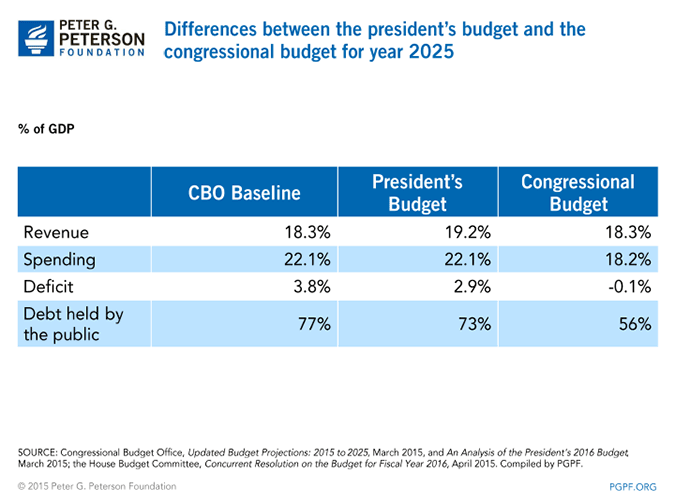
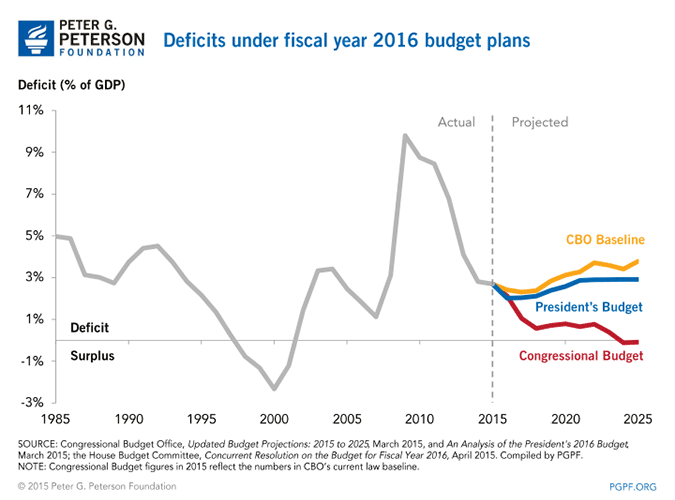
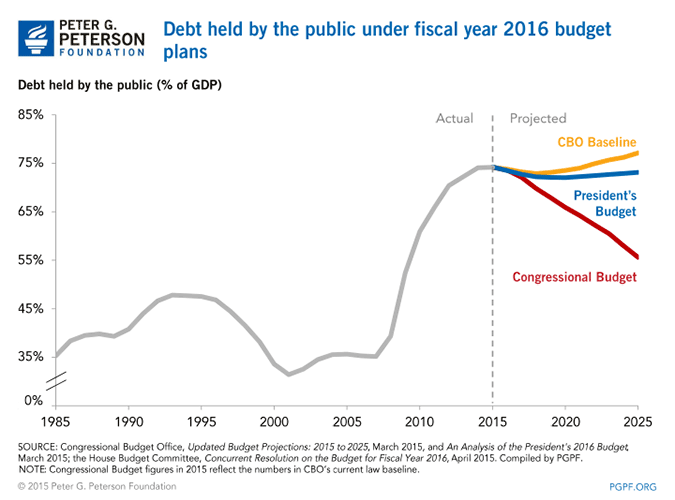
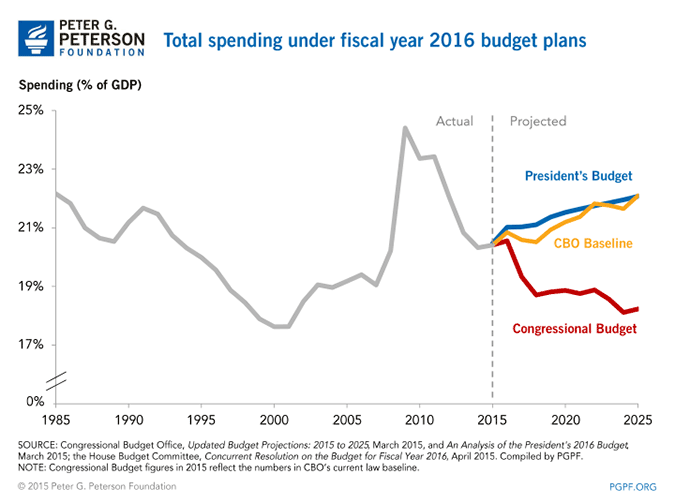
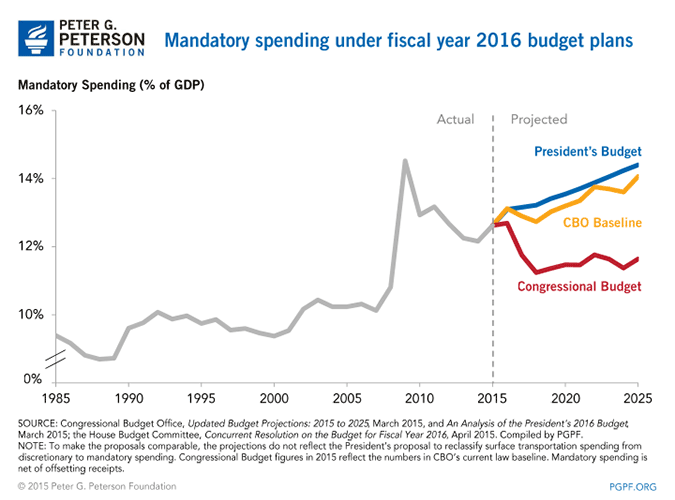
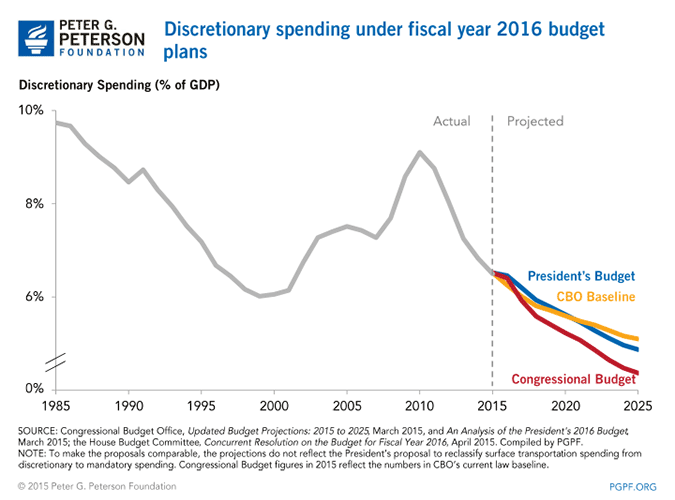
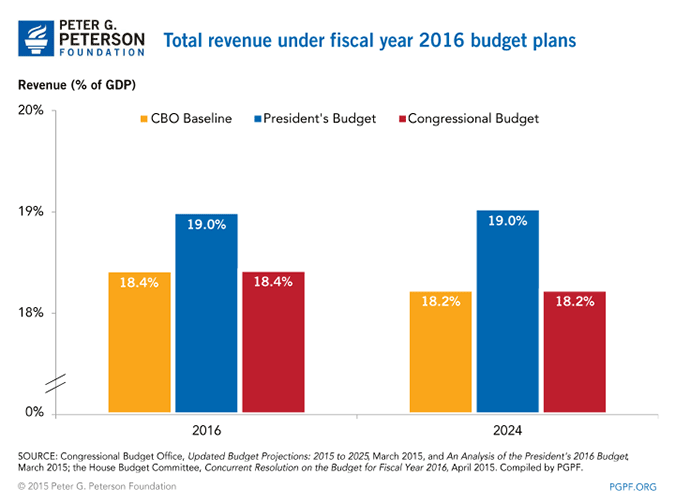
1 To make the proposals comparable, the projections do not reflect the president’s proposal to reclassify surface transportation spending from discretionary to mandatory spending. (Back to citation)
